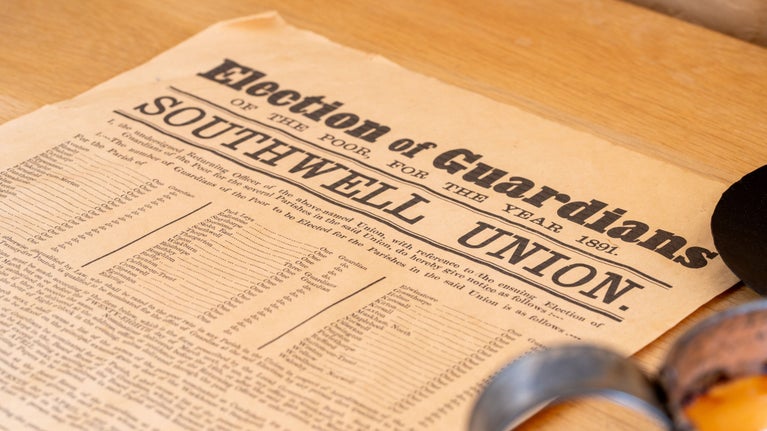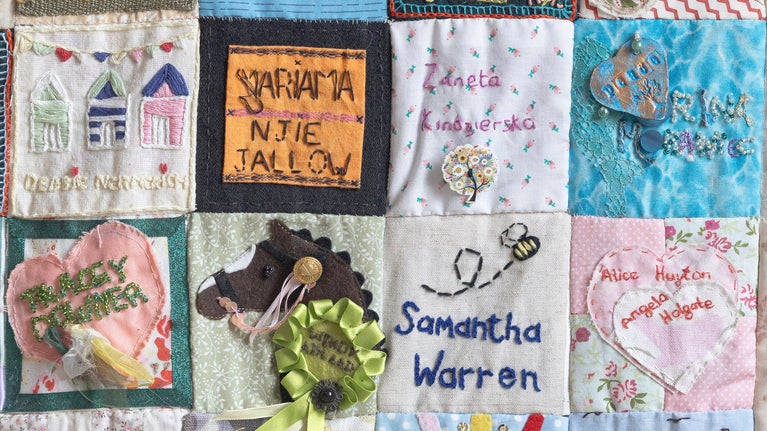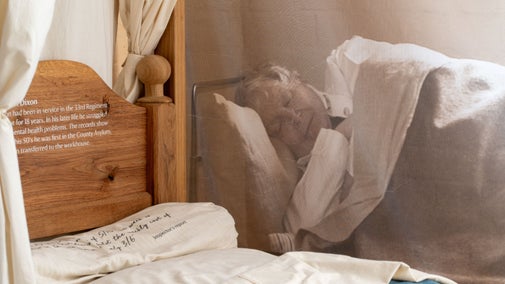
Discover more at The Workhouse and Infirmary
Find out when The Workhouse and Infirmary is open, how to get here, the things to see and do and more.

Explore the atmospheric Workhouse building and the Infirmary. With guided tours sharing the history, activities for families and exhibitions, you can uncover the stories of the people that lived and worked here.
This austere building, the most complete workhouse in existence, was pivotal in the development of our national health and welfare system. For decades it was where the poorest in society had to work and where they received food, shelter and medical care.
Charles Dickens's Oliver Twist painted a bleak picture of life in the workhouse. Here in this rural workhouse at Southwell, we show that – although harsh and monotonous – aspects such as education, medical care or diet may have been better inside The Workhouse than for the poor in their own homes.
Enhance your day with an external tour of each of the buildings, giving visitors an overview which will compliment their own self-led tour inside.
Workhouse tours run at 11.15 and 13.15 and Infirmary tours run at 12.15 and 14.15. Tours should be booked at the Vistor Reception Building on arrival.
Tours are led by our dedicated team of volunteers when available.

When the house opens, the journey begins at the Visitor Hub where you’ll be able to collect a digital device. These devices are triggered when held over specific objects within The Workhouse and Infirmary and tell the story of how past inmates were treated. You can then explore the main buildings, chat to room guides and learn about those who lived and worked here.
Younger visitors can enjoy children’s trails and games that tell stories from a historic and contemporary perspective. There are opportunities to dress up as pauper boys and girls in specially recreated costumes.
'The Women’s Quilt' is made up of 598 patches, one patch for each woman who was killed as a result of domestic violence in England and Wales between 2009 and 2015.
The idea of the quilt was conceived by Labour and Cooperative Councillor Roxanne Ellis and can be found within The Workhouse itself commemorating the lives of these women.
A Facebook group was set up to co-ordinate making the quilt with patches coming from as far away as New Zealand. They were stitched by a central team in Nottingham.
The quilt was launched in the Houses of Parliament on International Woman's Day in 2017 before touring around the UK. The quilt will remain at The Workhouse & Infirmary for the foreseeable future.
A section of the quilt is on display in the upstairs/downstairs room on the ground floor of The Workhouse.

The infirmary has been recreated with different spaces to chart how it might have looked at its start in the 1870s, to a later 1970s care ward.
You can also see a room used by the last resident when the building finally closed its doors in the late 1980s.
The National Trust makes use of drones for survey, inspection, filming and photography. However, such work is commissioned in response to a specific need and undertaken by professional contractors.
The Workhouse & Infirmary does not permit unauthorised drone operation from its land.
In the event of adverse weather conditions, the decision may be taken to close the property for safety reasons.
In particular, if wind speeds reach 44 mph, the site will close and safety checks will need to take place before it can reopen.
Notices will be published on the homepage of the website, on the National Trust app, and on our social media channels to keep visitors informed. Please check before travelling.
Please be aware that the mobile phone signal is poor. We recommend arranging a meeting point for family and friends ahead of your visit.

Find out when The Workhouse and Infirmary is open, how to get here, the things to see and do and more.

Learn about the concept and the history of The Workhouse and Infirmary and the role that they played.

From plot to pauper plate, explore the recreated Victorian vegetable garden and admire the range of heritage varieties grown.

Take a sneak peek into the treasure trove that is the collection of The Workhouse and Infirmary and learn what these objects tell us about the history of this special place.

Historic buildings are a treasure trove of stories, art and collections. Learn more about their past and plan your next visit.

Explore the diverse range of houses and buildings in Nottinghamshire and Lincolnshire, from historic churches and country houses to a Victorian workhouse.